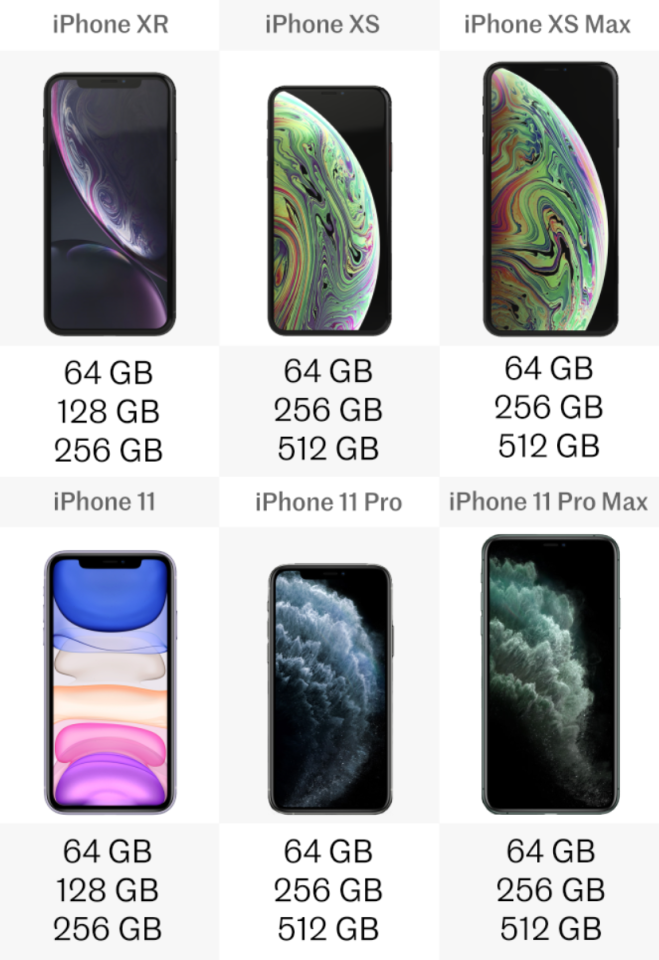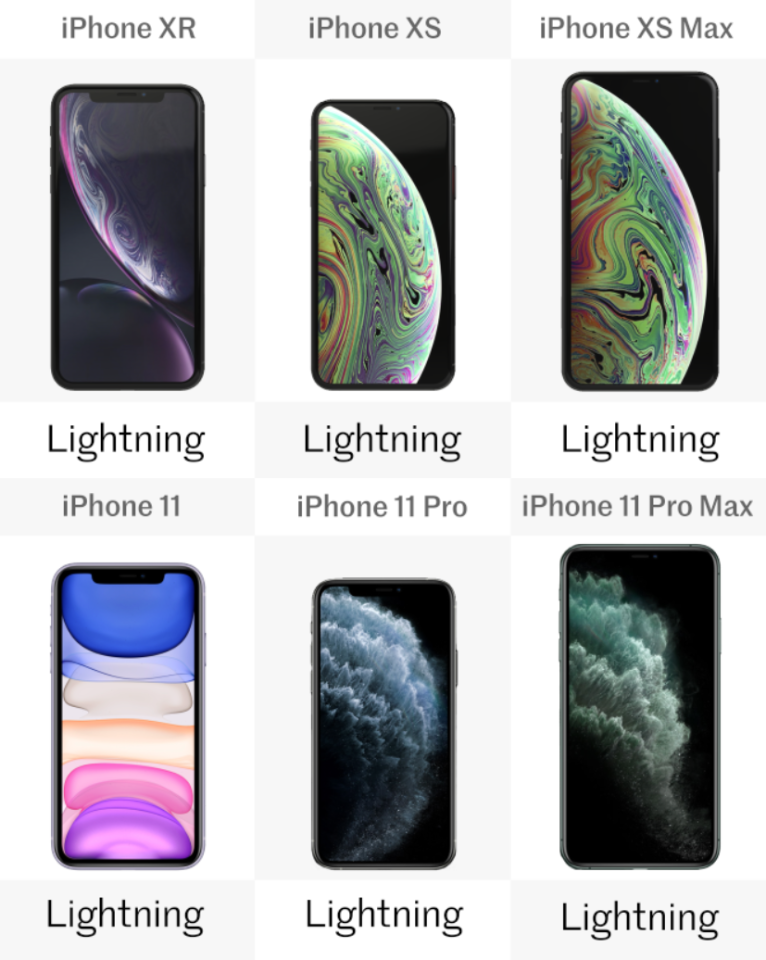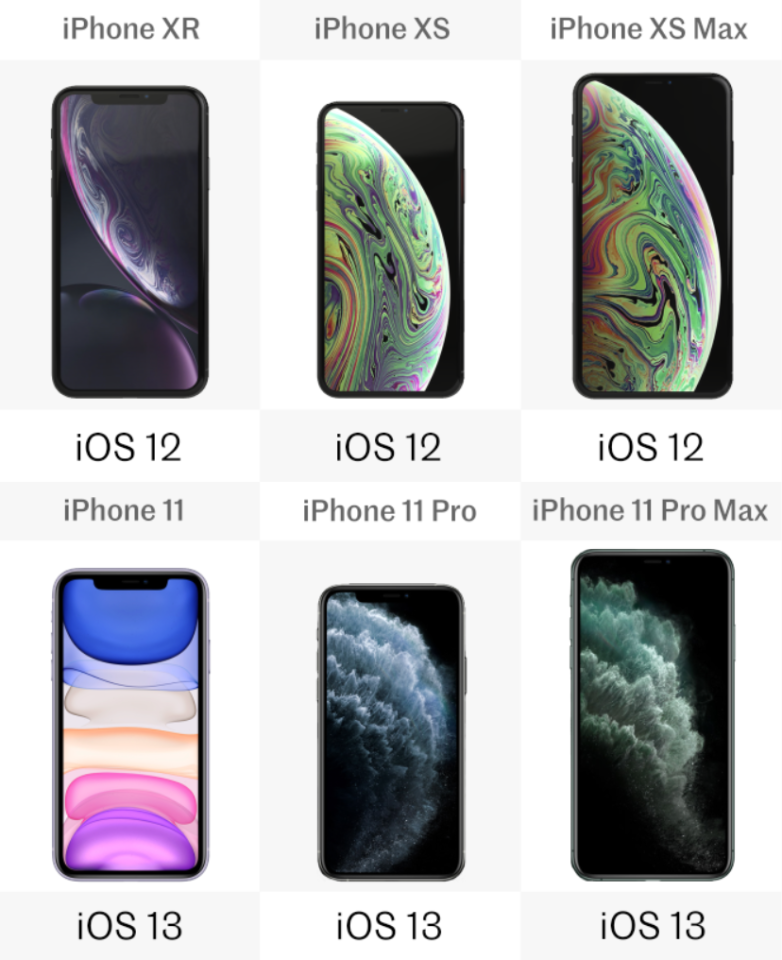The iPhone 12 has landed - compare the iPhone 11 and iPhone 12
Right on schedule, Apple has unveiled its new iPhones for 2019 – the iPhone 11, 11 Pro and 11 Pro Max. The inevitable new question is, “Is it worth an upgrade?” To help you decide, New Atlas compares the specs and features of the new iPhone 11, iPhone 11 Pro and iPhone 11 Pro Max to last year’s iPhone XR, XS and XS Max.
For this comparison we examine all three of last year’s models, even though Apple has now officially ditched the iPhone XS and XS Max. We suspect this decision is to help the new models stand out – which may turn out to be a wise move because specs-wise, there isn’t all that much new about the iPhone 11 range.
Either way, we’ve still included the XS and XS Max because they are still available second hand or new from other retailers. And of course, it can be useful for people who may have one of those models and are thinking about upgrading.
Size

The iPhone 11 seems to be basically in the same shell as last year’s XR – its dimensions, weight and build materials are all the same. The 11 Pro and Pro Max are both slightly bigger than their previous counterparts.
Weight

As mentioned earlier, the iPhone 11 weighs the same as the XR, while the 11 Pro is (fittingly) 11 g heavier than the XS. The Pro Max, meanwhile, tips the scales at a whopping 226 g, making it not just the heaviest iPhone ever but also the heaviest mainstream phone on the market.
Colors

Continuing Apple tradition, the entry-level model gets all the splashy, bright colors, while the higher-end phones stick with muted, classy tones. In this case, the iPhone 11 comes in six options: black, white, green, yellow, purple and red. The 11 Pro and Pro Max stick to last year’s gold, silver and “space gray” tones, with a new addition of midnight green.
Build

All six of these phones are made with glass front and back, ringed in metal. For the iPhone 11 and XR, that frame is aluminum, while the 11 Pro, Pro Max, XS and XS Max are made with stainless steel.
Water resistance

This year, Apple has finally made all three new iPhones completely waterproof, with a rating of IP68. The company says the iPhone 11, XS and XS Max can be submerged down to 2 m (6.6 ft) for up to 30 minutes, while the 11 Pro and Pro Max can survive down to a depth of 4 m (13.1 ft) for that long. The XR’s IP67 rating means it can only get down to 1 m (3.3 ft).
Of course, we wouldn’t recommend putting those limits to the test. It’s still not a good idea to go swimming with your iPhone, but it’s nice to know that spilling water on it or briefly dropping it in the bath or pool won’t instantly kill it.Display size

There’s no change in screen sizes this year, as all three new phones have the same-sized displays as their last-gen counterparts.
Screen-to-body ratio

Since device sizes have grown slightly and display sizes haven’t, the new phones have marginally bigger bezels this year – with exception of the iPhone 11. That said, we’re talking about less than one percent difference in each case, so you’ll be hard-pressed to notice.
Display resolution

Again, with no changes in display sizes there are no changes in display resolutions either. That said, on the iPhone 11 Pro and Pro Max Apple has boosted the brightness up to 1,200 nits and contrast up to 2 million-to-one, both of which are roughly double that of the iPhone XR, XS and XS Max.
Display type

As the entry-level model, the iPhone 11 keeps the IPS LCD screen of the XR, while the 11 Pro and Pro Max stick with the OLED screens of the XS and XS Max. Both technologies have their pros and cons, but generally speaking, OLED displays have brighter colors and deeper blacks, while IPS LCD may look sharper and have more natural colors.
Biometrics

No change here either. Apple phased out fingerprints years ago and has focused on facial recognition to unlock devices, making use of the depth-sensing selfie cam.
Processor

The three new iPhones are all running the latest chipset, the A13 Bionic. Apple says these are up to 20 percent faster than the A12, performing over a trillion operations per second. The new chips are also packing the third-generation Neural Engine, which apparently allows for faster machine learning analysis of videos and photos.
RAM

The RAM has also had a decent boost in the new phones, with the 11 Pro and Pro Max up to a respectable 6 GB.
Built-in storage

Storage capacity has also stalled, but the options were already generous. It’s hard to imagine any regular iPhone user needing 512 GB, but it’s nice to have the choice. Of course, that choice comes with a hefty price tag.
Make sure you choose wisely too – Apple still refuses to put microSD card slots into iPhones, so you’re stuck with whatever capacity you get.
Battery

All three new phones have had a slight battery upgrade. In terms of raw numbers, iPhones always look a little lacking compared to their competitors, but Apple is known to be able to squeeze more juice out of less, mostly thanks to having such tight controls over the hardware and software ecosystem.
Officially, Apple says the iPhone 11 lasts up to an hour longer than the XR, and the 11 Pro up to four hours longer than the XS. The 11 Pro Max meanwhile has the longest battery life of any iPhone, up to five hours longer than the XS Max.
Fast charging

All six of these phones can be fast-charged, but there’s a catch: you need an 18-W USB-C Power Adapter. These come bundled in with the iPhone 11 Pro and Pro Max, but if you want to fast-charge one of the other phones, you’ll need to buy a separate adapter for US$29.
Wireless charging

Again, all six phones can be wirelessly charged too, pending purchase of a separate charger. This stings less though, since basically nobody packs in a wireless charger yet.
Ports

Apple’s proprietary Lightning port is the only one on the bottom of all six of these iPhones. This is used both to charge the phone and connect the included earbuds. Of course, you can always use Bluetooth earbuds and headphones if you prefer.
Front camera

For this year’s models, Apple has bumped up the megapixel count on the selfie cams, from 7 to 12 MP. The aperture stays the same, and they all still have the depth-sensing capabilities that the company calls TrueDepth. Apple says the new front-facing cameras have a wider field of view.
Rear camera

This is where the most striking differences come in, with the new phones each getting an extra rear camera. In the case of the iPhone 11 that means two, while the 11 Pro and Pro Max now have three eyes.
In addition to the 12-MP wide-angle lens as seen on the XR, the iPhone 11 now has a 12-MP ultra-wide camera, with an aperture of f/2.4. That essentially makes it the same as last year’s XS and XS Max
The iPhone 11 Pro and Pro Max both have this same setup, plus a third camera that has 12 MP, an aperture of f/2.0, and a telephoto lens.
Photo/video

Despite the extra camera, there aren’t many new photo and video modes in the new phones. The main one is Night Mode, which uses AI to bring out more detail in low light, much like Google’s Night Sight.
Other than that though, most of the rest of the capabilities were present on last year’s models. All six iPhones can snap images with High Dynamic Range, and shoot video in up to 4K resolution at up to 60 frames per second.
They can also slow things down to 240 fps, for Full HD slow-mo. At the other end, timelapses are present and accounted for.
Panoramas can be shot and stitched together up to 63 MP. Multiple cameras allow for nice bokeh effects. And of course, the fun little AR modes like Animoji and Memoji carry across generations.
Operating system

As always, new iPhones means a new version of the operating system. In this case, iOS 13 adds a dark mode, new editing tools for photos and videos, and a few other tweaks. This will eventually roll out to the older models too.
Assistant

It wouldn’t be an iPhone without stalwart Siri helping out. She’s present and accounted for on all six of these phones.
Release date

The iPhone 11, 11 Pro and 11 Pro Max are all due to launch on September 20, 2019. Luckily, there’s no staggered release this year – for whatever reason, last year the iPhone XR wasn’t out until a month after the XS and XS Max.
Price (US$)

The iPhone 11 starts at $699 for the 64 GB model, or you can double the storage for an extra 50 bucks. After that, it’s an extra $100 to double it again.
For the others, you’re looking at the $1,000 mark and up, making them pretty pricey investments. Interestingly, the iPhone 11 Pro and Pro Max models are all the same prices as the XS and XS Max. Rather than give the two older models a price cut, Apple seems to have just dropped them entirely. If you’re particularly keen, you can still buy them from other retailers, but for that price you might as well go for the new models. This is probably by design on Apple’s part, to combat slumping sales.
That said, the iPhone XR has now had a pretty good price cut, starting at $599. Given the differences are fairly slim, maybe now is the time to jump on that if you have an iPhone 8 or earlier – or an Android phone, for that matter.
- Compare 2020 iPhones: iPhone 12 vs. iPhone 11 vs. iPhone SE
- Compare 2018 iPhones: iPhone 11, 11 Pro and 11 Pro Max vs. iPhone XR, XS and XS Max




























